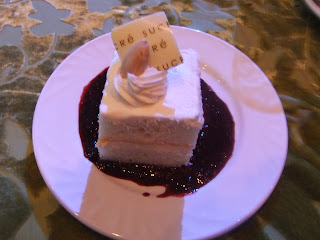Remarriage Trends
These days, remarriages after divorce is more common. According to a
2002 study by the U.S. National Center for Health Statistics, statistics show:
• 54 percent of divorced women remarry within 5 years
• 75 percent of divorced women remarry within 10 years
• Black women are the least likely to remarry
• White women are the most likely to remarry
However, a new
2007 report from the U.S. Census Bureau shows that in 2004 (the year of the study):
• 12 percent of men and 13 percent of women had married twice
• 3 percent each had married three or more times
• 58 percent of women and 54 percent of men 15 and older had married only once
Social stigma dictates that second marriages should not be formal, extravagant or elaborate celebrations, but rather quiet and small ones. The importance should be placed in the fact that it is still the celebration of the union of two people who have found one another, love each other, and have a chance at life filled with joy, happiness, and that “happily ever after” that everyone deserves.
Second Marriage Etiquette Guidelines:
This may vary from one culture to another.
Please remember to be respectful of all traditions.
• Announcements: before officially and formerly announcing the engagement, it is important that if there are children involved, they should be the first to know. Followed by parents and the ex-spouse. Then, if the couple so chooses, via the newspaper, email or engagement party.
• Engagement Party: no rules, although typically not hosted by the parents or the couple. Most couples choose to have a small intimate dinner out with friends and family instead of having a party.
• Invitations: these can be simple, or elegant and elaborate but should be in theme with the wedding style.
• Whom to invite: etiquette dictates that the former in-laws and ex-spouses, no matter how close they may be, should not be invited.
• Bridal Showers: this is optional and again, there are no hard and fast rules; but it is recommended that it be small and intimate affair for very close friends. As in the first marriage, only those attending the ceremony and reception should be invited to the shower. Do not invite anyone that isn’t invited to the wedding. It is typically hosted by the bridal party. Those invited to the first wedding shower should not be invited to the second and if they are, they are not obligated to bring a gift.
• Gift Giving: these couples are typically already established in life and have accumulated more things than those in their first marriage. If they have not registered and already have a house, it is advisable to give them elegant crystal or china or make a donation to their favorite charity.
• The Wedding Dress: there is no hard and fast rule about not wearing a wedding dress and with the infinite choices available these days, there are many styles to choose from. Remember, it is your day and you want to look beautiful. Th bride can wear any color even white, as it no longer only symbolizes purity.
• Bridal party: it is optional, not necessary, to have attendants, a processional, or someone to walk you down the aisle.
• Rehearsal Dinner: optional.
• Ceremonies and Vows: can be civil or religious. If both bride and groom have children, be sure to involve them in the ceremony if they want to be included. There are many unique ways to incorporate children in the wedding for example: lighting a family unity candle versus the traditional one, unity sand pouring ceremony, escort down the aisle, being one of the attendants or doing a reading, and more. You can personalize your vows to include the children, if you have any. If it is a religious ceremony, be sure to check with your officiant as to what might be different from the first marriage vows.
• Reception: can be as simple or as elaborate as you wish. Many couples choose to omit the tossing of the bouquet and garter. The receiving line includes the couple and their children, if they have any. Some of the more traditional toasts may be omitted.
• Honeymoon: yes, you may still go on a honeymoon. If both couples have children, you might like to consider a honeymoon that will include the children -- a “FamilyMoon,” a term coined back in 2004. The latter has been a growing trend for many couples who want honeymoons to include their children, which makes for good bonding experiences. Many foreign and domestic destinations are now family-inclusive. For example, beach resorts in Negril, Turks & Caicos, St. Lucia and Antigua to name a few. Other options are to take a Disney or other similar cruise and/or find domestic locations. For more info, go to:
www.adventuresbydisney.com,
www.austinlehman.com,
www.beaches.com,
www.butterfield.com,
www.carnival.com,
www.disneycruise.com,
www.ncl.com,
www.princess.com,
www.eliteislandresorts.com,
www.winjammer-landing.com.
In a nutshell: make it the most memorable and enjoyable day of the beginning of your happily forever after.
Resources for the blended family:




 I was in New Orleans for this year's The Special Event Show (TSE) this past January, and I'd like to share the amazing experience! I thought I should start with a little history of the amazing city of New Orleans, which is still recovering from the devastating Katrina.
I was in New Orleans for this year's The Special Event Show (TSE) this past January, and I'd like to share the amazing experience! I thought I should start with a little history of the amazing city of New Orleans, which is still recovering from the devastating Katrina.









 Image courtesy of Northlite
Image courtesy of Northlite